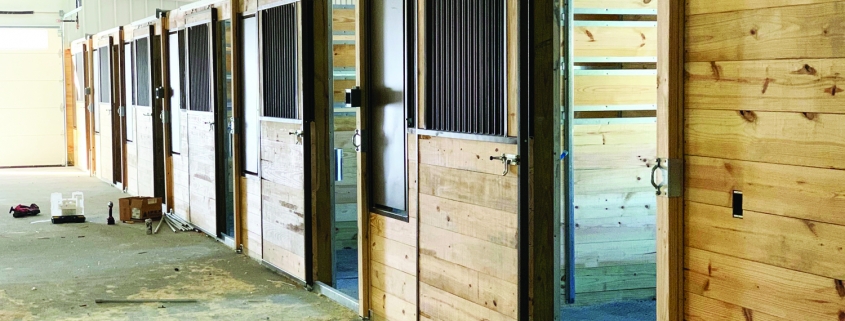Every dog (regardless of breed) is unique. This is not an all-inclusive list, as there are several hundred breeds worldwide, but rather a glimpse at some of the more popular and unique breeds (AKC recognized or not) that we have compiled for this issue.
Akbash Dog, Alaskan Klee Kai, Affenpinscher, Afghan Hound, Airedale Terrier, Akita, Alaskan Malamute, Alapaha Blue Blood Bulldogs, American Bulldog, American English Coonhound, American Eskimo Dog, American Foxhound, American Hairless Terrier, American Leopard Hound, American Pit Bull Terrier, American Staffordshire Terrier, American Water Spaniel, Anatolian Shepherd Dog, Appenzeller Sennenhund, Australian Cattle Dog, Australian Kelpie, Australian Shepherd, Australian Stumpy Tail Cattle Dog, Australian Terrier, Azawakh
New Breed: The Alaskan Klee Kai is a miniature version of the Alaskan Husky who was bred to pull light loads over long distances. Linda Spurlin created the breed in the early ‘70s by mixing Alaskan Huskies, Siberian Huskies, Schipperkes and American Eskimos. Klee Kai come in four colors—solid white, black and white, gray and white or red and white—and three sizes (standard, miniature and toy). Standing as tall as 17 inches at the shoulder or as short as 13 inches, they weigh between 9 and 23 pounds. “Don’t kid yourself this breed sheds year-round,” says Kimberly Mix who owns two Klee Kai named Tikanni and Nymeria. “Double coats mean strict grooming during seasonal shedding. I adhere to the strict grooming practice of baths biannually.”
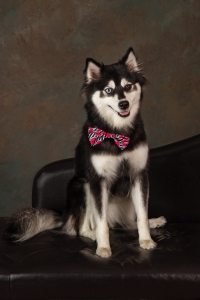
Klee Kai are intelligent, curious, energetic and quick. While loving and loyal toward family members, they’re shy around strangers. They can also be escape artists or runners. “Klee Kai have a personality where if you aren’t their person, or you don’t have treats for them, they have no use for you,” Mix says. “Patience is a must. They’re characters and will rule your roost if you allow them. Socialize. Let them experience as much as possible. You’ll end up with a much more rounded, confident Klee Kai for your efforts.”
Barbet, Basenji, Basset Fauve de Bretagne, Basset Hound, Bavarian Mountain Scent Hound, Beagle, Bearded Collie, Beauceron, Bedlington Terrier, Belgian Laekenois, Belgian Malinois, Belgian Sheepdog, Belgian Tervuren, Bergamasco Sheepdog, Berger Picard, Bernese Mountain Dog, Bichon Frise, Biewer Terrier, Black and Tan Coonhound, Black Mouth Cur, Black Russian Terrier, Bloodhound, Bluetick Coonhound, Blue Heeler (Australian Cattle Dog), Blue Lacy, Boerboel, Bohemian Shepherd, Bolognese, Border Collie, Border Terrier, Borzoi, Boston Terrier, Bouvier des Flandres, Boxer, Boykin Spaniel, Bracco Italiano, Braque du Bourbonnais, Braque Francais Pyrenean, Brazilian Dogo, Brazilian Mastiff, Briard, Brittany, Broholmer, Brussels Griffon, Bull Terrier, Bulldog, Bullmastiff
Boxers were developed in Germany during the late 19th century when Bullenbeissers were crossed with English Bulldogs. They were used to hunt bears, deer, bison and wild boar. By the late 1800s, they became butcher’s dogs, controlling cattle in slaughterhouses. The Boxer was called boxl, meaning ‘short trousers’ which may be the root of its name. Boxers are also known for sparring with their front paws while standing on their hind legs. They come in fawn, brindle or white. They stand 21 to 25 inches tall and weigh between 50 and 80 pounds.
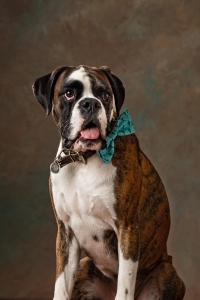
When the Boxer is excited, it twists into a semicircle similar to the shape of a kidney bean, and turns in circles. Boxers also make a special soundcalled a “woo-woo” when they want attention. Because of their clownish sense of humor and boundless energy, the Boxer is sometimes called the “Peter Pan” of Dogdom. “Floyd makes me laugh every day. I tell people that he loves life. He wants to be with my five kids or two Frenchies whenever they’re playing,” says owner Margie Shaw. Male boxers are more social, affectionate and playful. “They have a mind of their own,” she says. “My females were more introverted and very protective of me.”
Cairn Terrier, Canaan Dog, Canadian Eskimo Dog, Cane Corso, Canary Dog, Cardigan Welsh Corgi, Carpathian Sheepdog, Carolina Dog, Catahoula Leopard Dog, Catalan Sheepdog, Caucasian Shepherd Dog, Cavalier King Charles Spaniel, Central Asian Shepherd Dog, Cesky Terrier, Chesapeake Bay Retriever, Chihuahua, Chinese Crested, Chinese Shar-Pei, Chinook, Chow Chow, Cirneco dell’Etna, Clumber Spaniel, Cocker Spaniel, Collie, Coton de Tulear, Croatian Sheepdog, Curly-coated Retriever, Czechoslovakian Vlcak
The Chihuahua is the oldest breed in North America and the smallest breed in the world. Named after the Mexican state of Chihuahua, the breed descended from the Techichi, a small, mute dog that lived with the Mayans and Toltecs as far back as 9 A.D. Chihuahuas, can have long, short, wavy or flat coats. They can be solid, marked or splashed and come in two different head shapes—apple and deer. Apple head Chihuahuas have broad, round foreheads with protruding eyes and short muzzles. Deer head Chihuahuas have the face shape of a baby fawn with a longer muzzle and larger ears. They’re six to nine inches tall at the shoulder and weigh three to six pounds.
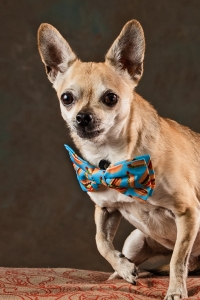
Chihuahuas are alert, intelligent, charming, graceful and sassy. Cori Bliesner ended up with her 9-year-old Chihuahua named Nacho because he ran out in front of her car. “I pulled over to try to get a hold of him because he was really tiny and scrawny,” she says. “I spent an hour trying to coax him out from behind the fence at the Miller Brewery.” Chihuahuas have been known to exclude family members and remain faithful to only one person. They have a high pitched, mono-tone bark. “Nacho likes to make his thoughts known and thinks he’s a lot bigger than he actually is,” Bliesner says. Chihuahuas certainly have their faults, but at the end of the day, they’re proof that good things come in small packages.
Dachshund, Dalmatian, Dandie Dinmont Terrier, Danish-Swedish Farmdog, Deutscher Wachtelhund, Doberman Pinscher, Dogo Argentino, Dogue de Bordeaux (French Mastiff), Drentsche Patrijshond, Drever, Dutch Shepherd
While some believe Dalmatians originated more than 400 years ago in Dalmatia, a region in modern-day Croatia, they’ve appeared in Egyptian hieroglyphs, Greek frescos and medieval letters. They also traveled with gypsies which may explain their elusive heritage. By the 1600s, Dalmatians worked as English carriage dogs. In the 19th century, they became fire-fighting carriage escorts and firehouse mascots. Dalmatians would bark to let bystanders know that they should get out of the way and comfort the horses as they pulled the wagon toward a fire.They also made sure that no one stole the firefighters’ equipment or the horses.
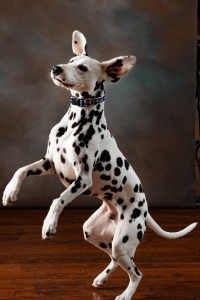
Dalmatians are between 19 to 23 inches tall and weigh between 45 and 60 pounds. Their spots usually appear 10 days after birth and continue to develop until they’re around 18 months old. Dalmatians come in black or liver spots that range from light tan to dark chocolate. They’re smart, athletic, empathetic, inquisitive and loyal. “Pierce rode on a firetruck at 8 weeks old and ended up calming a child at a fire scene. Halligan is deaf in one ear, but he can hear a cookie drop across the house,” says owner Lori Holz. “Pierce loves water and will play in the sprinkler or swim in a river or lake. They both fly three feet off the ground to grab balls in midair.”
Egyptian Baladi, English Bulldog, English Cocker Spaniel, English Foxhound, English Setter, English Springer Spaniel, English Toy Spaniel, Entlebucher Mountain Dog, Estrela Mountain Dog, Eurasier
The English Bulldog was created in England during the 1200s for the sport of bullbaiting, where a staked bull brawled with a pack of dogs while spectators bet on the outcome. When blood sports were outlawed in 1835, the Bulldog was exported to Germany and the Southern U.S. It was used to herd cattle where the terrain was too rough to allow for fences. By 1886, Bulldog breeders on both sides of the Atlantic had created a thick-set, low-slung, well-muscled bruiser with a sour mug. The Bulldog weighs up to 55 pounds but is between 12 and 15 inches tall. Its short, smooth, glossy coat comes in brindle, piebald, red, fawn or white.
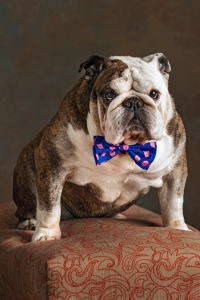
Emily Brendel found her Bulldog named Pork on Facebook in December 2016. Pork is cheerful, comical, friendly and headstrong. “He will do what I want only after I tell him a few times. I have to physically pick him up off the bed or push him out the door. He likes to sleep on the couch or floor most of the day,” she says. “Pork has tear stains on his face wrinkles that are very difficult to get rid of. He also has a deep tail pocket that I clean with Desitin cream and baby wipes. He loves to get his tail pocket cleaned. He’ll run over to me as soon as he sees me grab some paper towels.”
Field Spaniel, Fila Brasileiro, Finnish Lapphund, Finnish Spitz, Flat-Coated Retriever, French Bulldog, French Mastiff, French Spaniel
In the late 1700s, the French Bulldog found favor with Nottingham lacemakers who worked long hours in unsafe mills. When the Industrial Revolution threatened their cottage industry, they immigrated to Northern France—where they crossed the toy-size Bulldog with Terriers and Pugs. With their snub noses and large bat ears, Frenchies became one of the world’s most popular small dog breeds. Tatiana Romanov, the second daughter of Tsar Nicholas II, had a Frenchie named Ortipo. He met the same tragic fate as the rest of the Russian royal family. Virginia’s Senator Robert Daniel also had a champion Frenchie named Gamin de Pycombe. He bought him for 150 British pounds ($15,000 in today’s U.S. dollars). They traveled on the Titanic. Daniel survived and lived until 1940. Gamin de Pycombe was last seen futilely swimming for his life in the sub-zero water.
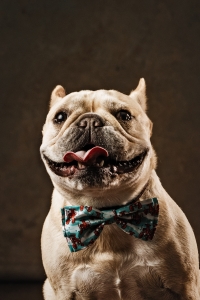
Frenchies are 11 to 12 inches tall and weigh 16 to 28 pounds. They come in brindle and white, piebald, white, fawn, brindle and tan. Frenchies are easygoing, affectionate, attentive, smart and sociable. They don’t bark a lot, but their alertness makes them excellent watchdogs. Hillery Boyden bought her 4-year-old Frenchie named Beau from a breeder in Pennsylvania. “Be prepared for a lot of snorting and farting. They have smushed faces, so they tend to be a little bit noisier,” she says. “French Bulldogs can also have bursts of intense energy, but they always want to be with you.”
A To F, By CHERESE COBB, FREELANCER
Georgian Shepherd, German Longhaired Pointer, German Pinscher, German Shepherd Dog, German Shorthaired Pointer, German Spitz, German Wirehaired Pointer, Giant Schnauzer, Glen of Imaal Terrier, Goldendoodle, Golden Retriever, Gordon Setter, Grand Basset Griffon Vendeen, Great Dane, Great Pyrenees, Greater Swiss Mountain Dog, Greenland Dog, Greyhound
“Great Danes are like having a toddler in a dog suit,” says Jennifer Klika, president of the Upper Midwest Great Dane Rescue in Eagan, Minn. “There are days I’d need a pitchfork to push my 9-year-old out of bed. Then he gets the zoomies and runs like a maniac for 15 minutes and looks like a camel whose legs are falling off.” With a lanky body and a head that doesn’t quite match, Danes pout when they want attention, slump when they’re disappointed and bounce when they’re happy.
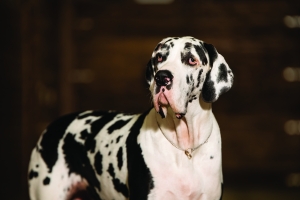
Danes were originally bred to hunt boars. Assyrians, a major power in the ancient Middle East, traded them with the Greeks and Romans. They mixed them with Irish Wolfhounds, Irish Greyhounds and the ancestors of English Mastiffs.
By the 1500s, German nobility used Danes to protect their homes and loved ones. They considered the breed to be the biggest and most handsome of dogs, calling them Kammerhundes (Chamber Dogs). They were given gilded collars trimmed with fringe and padded with velvet.
In the 1700s, French naturalist Georges-Louis Leclerc de Buffon discovered a slimmer German Boarhound. He said the Danish climate caused it to become a Grand Danois (Big Danish). He didn’t develop the breed. But the name stuck.
Danes live an average of 7 to 10 years. They’re prone to bone cancer, heart disease, hypothyroidism, ear infections and hip dislocation.
According to the Universities Federation for Animal Welfare (UFAW), 42 percent of Great Danes also develop bloat during their lifetimes. Treatment consists of a gastropexy (or “pexy”), in which the dog’s stomach is sutured to the body wall, preventing it from twisting. “This procedure is recommended at the time of spay or neuter, as opposed to a second anesthetic event,” says Dr. Morgan McCoy from Magnolia Springs Veterinary Center in Sturtevant, Wis.
By CHERESE COBB, FREELANCER, SPRING 2020 COVER DOG
Hamiltonstovare, Hanover Hound, Hanoverian Scenthound, Harrier, Havana Silk Dog, Havanese, Hokkaido, Hovawart, Himalayan Sheepdog
Ibizan Hound, Icelandic Sheepdog, Irish Red and White Setter, Irish Setter, Irish Terrier, Irish Water Spaniel, Irish Wolfhound, Italian Greyhound, Italian Spinone
As is the case for many of our dog breeds, the origins of the Italian Greyhound are sketchy, but we do know that they were not developed in Italy. It is widely believed that the breed came out of Turkey and Greece about 2000 years ago, where images of small Greyhound-like dogs have been found on ancient artifacts. From there, the Italian Greyhound spread throughout the Mediterranean and by the Middle Ages could be found throughout Southern Europe.
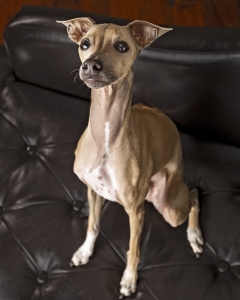
Bred for companionship and as a hunter of small game, the little dogs quickly became the darlings of the aristocracy. Royal owners included Charles I, Catherine the Great and later, Queen Victoria during whose reign the popularity of IGs peaked in England. Frederick II of Prussia especially liked the breed and owned more than 50 of the little dogs! IGs can be seen being held by their highborn owners in Renaissance art and portraits. They were especially beloved by wealthy Italians and soon became known as Italian Greyhounds. In the United States, the Italian Greyhound was recognized by the AKC in 1886 and this year was ranked 73rd out of 193 in popularity.
IGs were bred down from the Greyhound and as such have all of the larger dogs hunting and speed capabilities. They are energetic and playful runners and jumpers, but because of their strong prey drive, cannot be relied upon to stay in place off-leash. They are sometimes referred to as Velcro dogs because they like to stick close to their humans and will follow them everywhere, even under bedcovers. IGs are affectionate and don’t like to be left alone for too long. They love attention, although they are not fond of roughhouse play. They are good with children who can respectfully and carefully interact with them.
Because they are generally adaptable to any environment that contains the humans they love, Italian Greyhounds can live almost anywhere. They make excellent apartment dogs but do need regular exercise. They love to run and can go as fast as 25mph! Again, they will take off if they spy something interesting to chase, so they can never be off-leash or outside a secure, fenced-in area. Like all of their Sighthound cousins, they are born thieves! And of course, they love being held!
Italian Greyhounds are generally healthy but can be prone to some health issues. These include epilepsy, thyroid problems, cataracts, periodontal disease and hip dysplasia. They are also sensitive to pesticides.
The Italian Greyhound is a Sighthound/Toy combination. An IG combines the qualities of a cuddly, loving lap dog with the impressive speed and prey drive of a Sighthound. I’d say this is the best of two worlds found together in one beautiful, portable package!
By PAMELA STACE, FREELANCER, FALL 2019 COVER DOG
Jagdterrier, Japanese Akitainu, Japanese Chin, Japanese Spitz, Jindo
Kai Ken, Karelian Bear Dog, Keeshond, Kerry Blue Terrier, Kishu Ken, Komondor, Kromfohrlander, Kuvasz
Labrador Retriever, Laekenois, Lagotto Romagnolo, Lakeland Terrier, Lancashire Heeler, Lapponian Herder, Large Munsterlander, Leonberger, Lhaso Apso, Louisiana Catahoula Leopard Dog (Catahoula Cur), Löwchen
Katerina, or Kate, our model, shares her name with Shakespeare’s famous heroine Katerina from “The Taming of the Shrew.” It seems that both Kates share a number of qualities including stubbornness, intelligence, independence, loyalty and devotion.
Like Shakespeare’s Kate, Lakelands, “Lakies” or “Laplanders” do what they want to do and can be quite bold! Owner Nora Clark says that her girl is friendly and well-behaved but likes things her way! The “Little Tank,” as Nora calls her, loves to be out in the snow but refuses to wear a coat. She loves to play, but can get a bit rough.
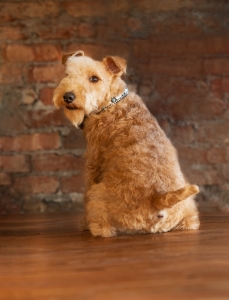
The Lakeland terrier originated in Cumberland, England’s Lake District, sometime in the 19th Century. This makes it one of the oldest of the terrier breeds. As sturdy little dogs with a dense, wiry double coat, they were originally bred to work independently from humans, hunting vermin over rocky terrain. Farmers also used Lakies together with hounds to keep foxes away from their sheep during lambing season. These dogs were bred to be tough, athletic and ready to take on anything big or small that got in their way. Coming from lake country, they adore water. The Lakeland is related to the now-extinct Old English black and tan terrier, the Bedlington terrier, the Dandie Dinmont terrier and the border collie. The Lakeland terrier was recognized by the AKC in 1934 and in 2018 was ranked 138 among registered breeds.
Lakies can do well anywhere, but they do best with a thoughtful and understanding owner. Highly energetic, sneaky and with a mind that never stops, they not only enjoy having a daily job to do, but MUST have one. Because they are very headstrong, Lakies need early socialization and training in order to effectively channel their natural eagerness, curiosity and intelligence. They are perfectly capable of finding their own fun around the house and can get into trouble there. So it is best for their owners to find ways to keep them busy! They love people and make especially great lap dogs! Lakies can take a long time to housetrain, but with patience and persistence they will get there! They may be overly protective of their humans or aggressive around other dogs. They are very intuitive and can really tune into the health issues and moods of their owners. Lakies are good watchdogs, but it is important that they be discouraged from being too barky. They are considered non-shedding, and they are a good choice for people who are allergic to dogs.
By CHERESE COBB, FREELANCER, SPRING 2019 COVER DOG
Majestic Tree Hound, Maltese, Manchester Terrier (Standard and Toy), Mastiff, Miniature American Shepherd, Miniature Bull Terrier, Miniature Pinscher, Miniature Schnauzer, Mountain Cur, Moscow Watchdog, Mudi
Native American Indian Dog, Neapolitan Mastiff, Nederlandse Kooikerhondje, Newfoundland, Norfolk Terrier, Norrbottenspets, Norwegian Buhund, Norwegian Elkhound, Norwegian Lundehund, Norwich Terrier, Nova Scotia Duck Tolling Retriever
Old Danish Pointer, Old English Sheepdog, Otterhound
Papillon, Parson Russell Terrier, Pekingese, Pembroke Welsh Corgi, Perro de Presa Canario, Peruvian Inca Orchid, Petit Basset Griffon Vendéen, Pharaoh Hound, Plott Hound, Pointer, Polish Lowland Sheepdog, Pomeranian, Poodle (Standard, Miniature, Toy), Porcelaine, Portuguese Podengo, Portuguese Podengo Pequeno, Portuguese Pointer, Portuguese Sheepdog, Portuguese Water Dog, Pudelpointer, Pug, Puli, Pumi, Pyrenean Mastiff, Pyrenean Shepherd
Queensland Heeler (Australian Cattle Dog), Qimmiq (Canadian Eskimo Dog)
Rafeiro do Alentejo, Rat Terrier, Redbone Coonhound, Rhodesian Ridgeback, Romanian Mioritic Shepherd Dog, Rottweiler, Russell Terrier, Russian Toy, Russian Tsvetnaya Bolonka
Rhodesian Ridgebacks are true Renaissance hounds. They are good at a variety of things and have an exciting history. Dutch colonists in southern Africa used the native hunting dogs of tribes and combined them with the more popular European breeds: Greyhounds and Terriers. Thus creating an athletic, regal-looking dog that could hunt in packs and track down lions. They were able to successfully find and confront these predators and keep them trapped by howling at them or baying from a safe distance. Imagine a pack of dogs surrounding the king of beasts like the hyenas did in Disney’s “The Lion King.” Ridgebacks were effective companions for South African-born Cornelius van Rooyen—big game hunter and dog breeder—in the late 19th century. Never killing the lions, the Ridgebacks would howl (bay) at them so the hunter had adequate time to pull out and dispatch his rifle. Ridgies are the national dog of South Africa.
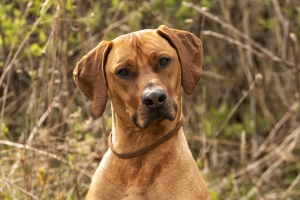
Most importantly, today they are devoted family dogs that are good with children—two-legged children of the human variety, that is. Ridgebacks have an extremely strong prey drive stemming from their days of trotting alongside hunters on horses and chasing down prides. Owner Dan Broege says his dog Reggie may have high energy, but he is still his couch potato at heart. “Reggie is super friendly, loves people and other dogs, but is very protective of the house.” Reggie will guard the house all day yet sleeps under the covers in the bed at night. Ridgebacks are typically very strong-willed dogs that are independent, loyal and domineering.
Because they are the stereotypical strong-willed four-legged children, Ridgies need a firm trainer from youth on. The ideal candidate is someone who can positively steer them in the right direction, keeping them on a tight leash but with lots of exercise. They need training classes and early socialization in order to become well-mannered and well-adjusted companions, according to the American Kennel Club. Though this dog is extremely loyal to his or her family, this is a dog that lives indoors and needs to be fenced-in when outside and off leash due to a heavy prey drive. Broege says his Ridgeback is a freak of an athlete yet possesses some unique quirks. Reggie is a whiner and a kisser but only kisses strangers! Weird. Not the typical behavior for a Ridgie. Usually, Rhodesians are quite affectionate with their owners and more reserved with strangers. Broege also mentions that Reggie loves to watch TV and will only chew on bones that Broege holds for him. Talk about your atypical royal Ridgie.
As for appearance, this beautiful breed should look muscular, symmetrical and balanced in outline, according to the AKC. They have a signature ridge of hair down their back and range in size. Their grooming needs are small as they only require the basics: nail trimming, brushing and bathing as upkeep.
By NASTASSIA PUTZ, PUBLISHER, SUMMER 2020 COVER DOG
Saint Bernard, Saluki, Samoyed, Schapendoes, Schipperke, Scottish Deerhound, Scottish Terrier, Sealyham Terrier, Segugio Italiano, Shetland Sheepdog, Shiba Inu, Shih Tzu, Shikoku, Siberian Husky, Silky Terrier, Skye Terrier, Sloughi, Slovakian Wirehaired Pointer, Slovensky Cuvac, Slovensky Kopov, Small Munsterlander, Smooth Fox Terrier, Soft Coated Wheaten Terrier, Spanish Mastiff, Spanish Water Dog, Spinone Italiano, Stabyhoun, Staffordshire Bull Terrier, Standard Schnauzer, Sussex Spaniel, Swedish Lapphund, Swedish Vallhund
The Japanese use three words to describe the Shiba Inu or Shiba—a national monument in Japan—and their most popular dog breed.
FIRST WORD: “Kan-i”—refers to the Shiba’s spirited confidence, alertness and bravery.
SECOND WORD: “Ryosei”—means good natured and loyal.
THIRD WORD: “Soboku”—describes easy, natural good looks.
Indeed, Shiba Inus exhibit all of these magnificent qualities as well as a couple interesting behaviors unique to them. But more about that later.
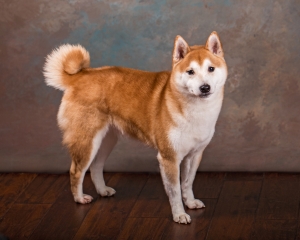
The Shiba Inu is the smallest of six original dog breeds native to Japan, the largest being the Akita. Shiba means “brushwood” in Japanese, and Inu means dog. It is unclear whether brushwood became part of the dog’s name because Shibas hunted in dense underbrush or because its red coat was like the autumn color of Japanese brushwood. During World War II, between bombing raids and outbreaks of distemper, Shibas almost became extinct. In order to save the Shiba, the Japanese began a breeding program that incorporated the last three remaining Shiba bloodlines. The Japanese Kennel Club was established in 1948.
Shiba Inus are relatively new to the U.S. The first Shiba arrived here in 1954, but the breed really didn’t become popular until the 1990s. The AKC officially recognized the Shiba in the Non-Sporting group in 1992, and today Shibas are the AKC’s 44th most-registered breed.
By PAMELA STACE, FREELANCER, FALL 2017 COVER DOG
Taiwan Dog, Teddy Roosevelt Terrier, Thai Ridgeback, Tibetan Mastiff, Tibetan Spaniel, Tibetan Terrier, Tornjak, Tosa, Toy Fox Terrier, Transylvanian Hound, Treeing Tennessee Brindle, Treeing Walker Coonhound
Ultimate Mastiff, Utonagan
Vizsla
Weimaraner, Welsh Springer Spaniel, Welsh Terrier, West Highland White Terrier, Wetterhoun, Whippet, Wire Fox Terrier, Wirehaired Pointing Griffon, Wirehaired Vizsla, Working Kelpie
Xoloitzcuintli (Mexican Hairless Dog)
Yakutian Laika, Yorkipoo, Yorkshire Terrier
Zuchon
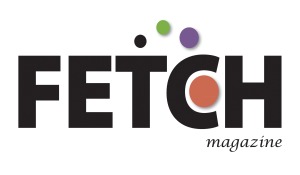
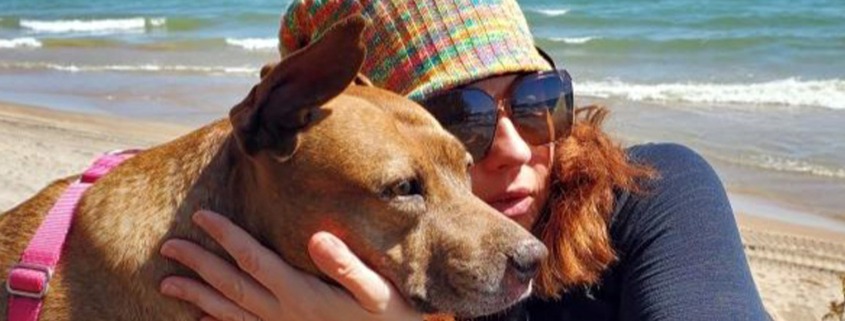
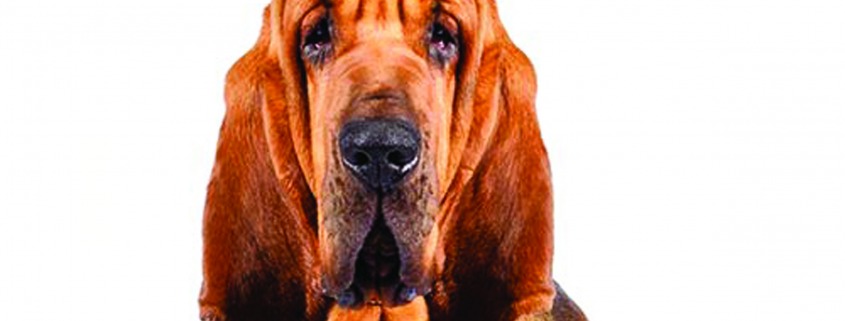
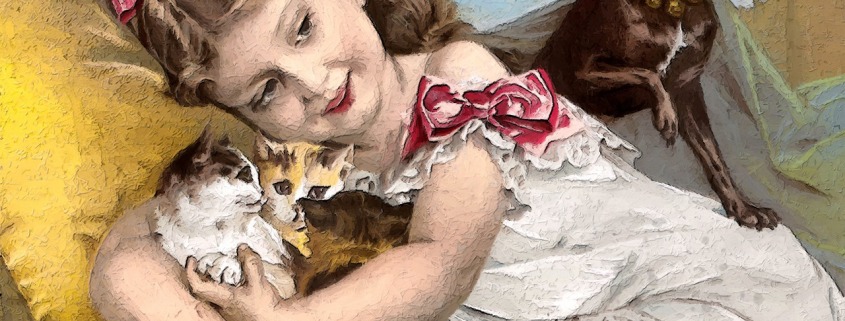
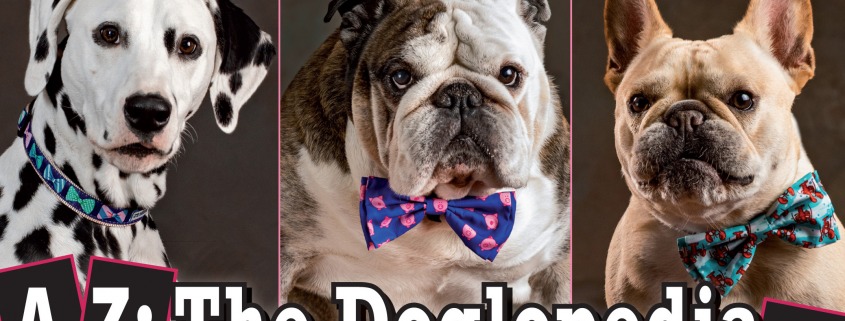











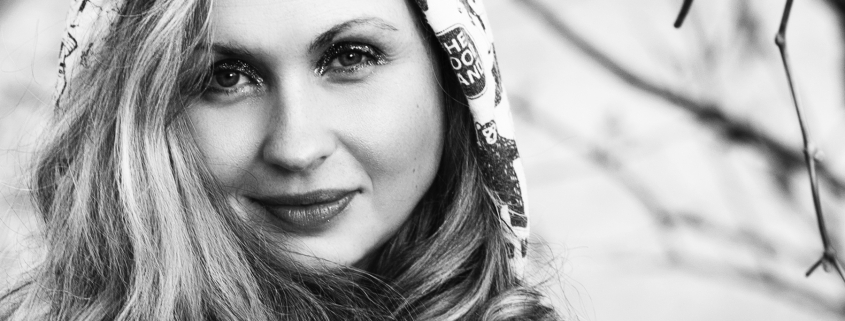


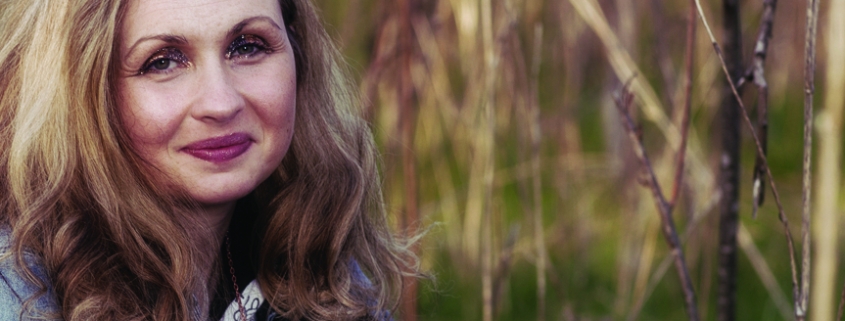
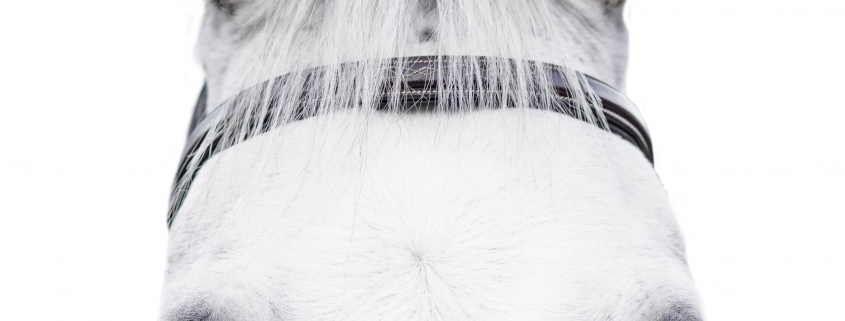 Copper Arrow Photography
Copper Arrow Photography